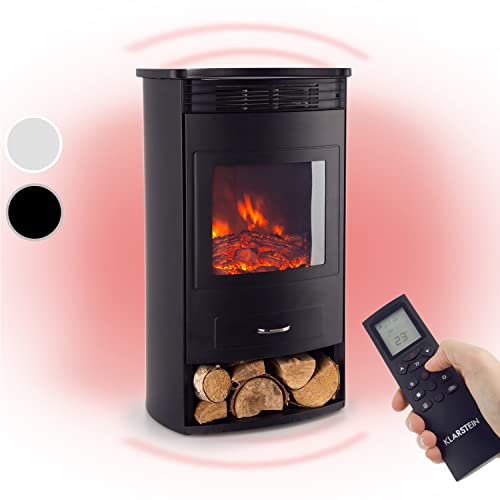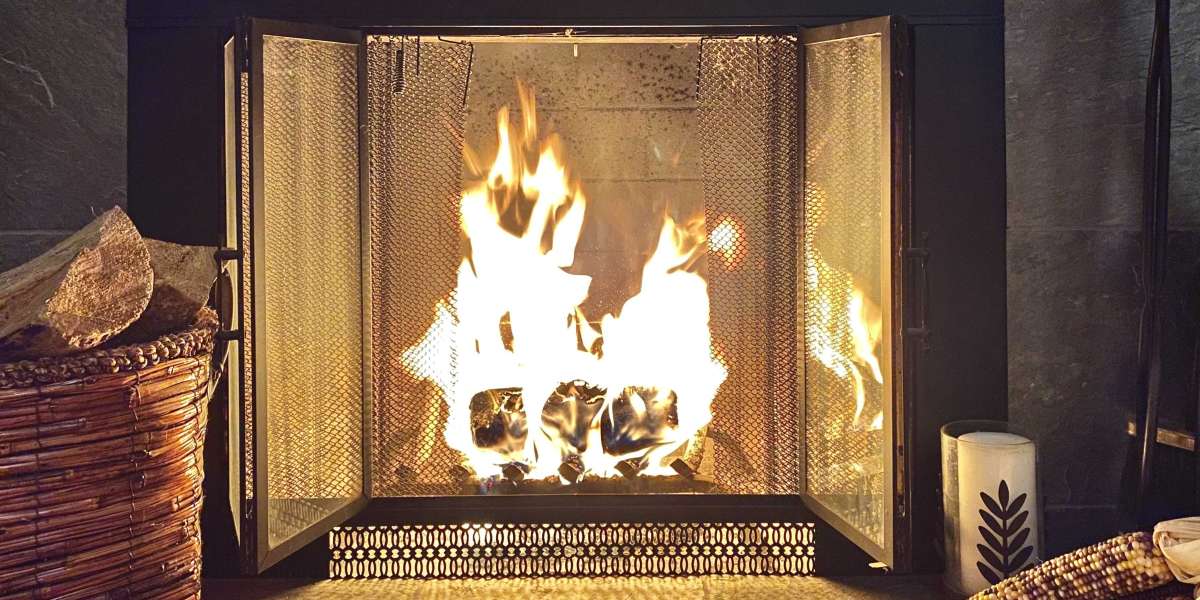Wood stoves, in contrast to traditional open fireplaces, are engineered to burn wood. This allows them to comply with tighter emissions regulations.
Wood burning stoves create sparkling yellow flames and soft crackling noises. They also give you a primal feeling of warmth. The smoke that is generated is filled with harmful air pollutants such as formaldehyde, benzene, and polycyclic aromatic hydrocarbons.
Efficient
Fireplaces and stoves that burn wood provide beautiful and natural heat to your home, but they are also incredibly efficient. A top-quality wood stove can be eco-friendly up to 77%. It is essential to get the most value of your log burner in light of increasing energy costs. The good news is it's now easier than ever before to do!
The amount of moisture in wood is one of the main factors that determines the efficiency of a wood-burning stove is. We recommend using only dried and seasoned wood that has dried over a period of at least one year and often two years. The dryer the wood is, the more efficiently it burns, which means less smoke and less harmful emissions.
Another advantage of a wood-burning stove is that it's a low carbon source of fuel, which is fantastic for the environment. If you buy locally-sourced wood, you also help to contribute to the active conservation and management of forests. This is beneficial for wildlife.
The only thing that a wood burning stove requires in terms maintenance is to regularly take away and get rid of the ash. It can be a bit of a hassle but it's worth it to ensure you get maximum heat from each and every log. If you allow the ashes to cool completely, they can also be used as a non-toxic and environmentally friendly ice melt. They can also be used to polish jewellery or absorb the odors.
A fireplace made of wood is a truly timeless classic. While they're not as popular than gas fireplaces, the allure and appeal of a roaring fire cannot be ignored. They're great for snuggling with on cold winter nights and are an ideal way to create a warm and inviting space within your home. Investing in a high-quality wood burner will pay off for many years. Our chimney sweeps are available to help you get the most value from your stove. Give us a call today to learn more.
Low Carbon
Wood burners that burn clean and efficiently are among the best ways to save money on logs while keeping your home warm. As an added benefit they also aid in the local woodland management. It's a great way of supporting the wildlife that lives in your local area.
Wood-burning fireplaces and stoves create very little pollution if they are maintained properly and used with dry, seasoned and dry firewood. If they aren't properly maintained or when they use wood that is of poor quality the smoke produced is a result of fine particles, commonly referred to as particulate pollution that can cause irritation to the lungs and other body organs. Carbon monoxide, toxic air pollutants such as benzene and formaldehyde, and polycyclic aromatic hydrocarbons are also present. Inhaling these types of air pollution can cause irritation of the lungs wheezing, coughing and asthma attacks. It can even cause serious health issues such as cancer, heart disease or premature death.
Many are concerned that wood-burning stoves can contribute to climate changes, but this isn't necessarily true. Burning wood produces energy that is carbon-neutral. The tree absorbs carbon dioxide throughout its lifetime. When it is burned the carbon dioxide is released into the atmosphere.
Since the wood is sourced locally, it reduces the amount of pollutants released in the process of transportation. It is also important to select top quality well-seasoned hardwoods, as they will provide a longer and more even burn than softwoods.
Modern wood stoves, such as those manufactured by Charlton Jenrick, emit much less pollution than older stoves. They have been certified to meet 2020 EPA standards, which are considerably more stringent than the earlier emission limits.
To avoid the buildup of exhaust within your home, all wood-burning stoves should be vented to the outside. By keeping flames above the logs, and ensuring you use dry, seasoned and dry wood, all of our current clean burn and DEFRA exempt stoves are capable of producing extremely clear exhaust and have particulate levels 60 percent or less below the DEFRA limit.
A wood-burning stove that has an integrated unit or catalytic converter could be the most efficient low carbon heating solution. These units re-ignite gasses and particles released from the initial burning in a subsequent phase by mixing them with superheated air. The remaining gases and particulates are transported through a catalytic combustion unit for a final and third combustion. This reduces emissions to levels far below the government standards.
Clean Burn
Cleanburn wood stoves burn fuel at the highest efficiency possible. This means that there are fewer particles emitted into the atmosphere when burning wood. The stove's air management system regulates the intake and venting of gases, ensuring the combustion process occurs in a controlled, sealed atmosphere. It also regulates the flame height to minimise emissions and maximise heat output.
This means that your chimney and the surrounding area will be cleaner than older stoves. Particulate matter (also called particle pollution) caused by incomplete combustion of wood causes respiratory issues like wheezing and coughing and can lead to the development of heart diseases such as stroke, diabetes, and other serious health issues. The air pollution resulting from wood burning is also an element that contributes to poor urban air quality.
Smoke from poorly burned timber is a source of fine particulate pollutants as well as harmful air pollutants such as carbon monoxide as well as other harmful air pollutants like nitrogen oxides as well as volatile organic compounds (VOCs), benzene, and formaldehyde. These particles can penetrate deep into the lungs, and other organs, causing discomfort and damage and even death. Airborne dust can also damage surfaces in your home with a smudge-like sensation.
When you are using a fireplace that is wood-burning it is important to use high-quality firewood that has been properly seasoned and dried. Hardwoods such as oak beech, ash and are the most efficient for heating. Hardwoods are dense and have a higher BTU than softwoods. They also provide more heat.
Contact your local authority to determine if they have any rules about wood burning. These rules could include rules on odors and nuisances and visible smoke emissions or smoke opacity limits.
If you have a wood stove with a glass door, it's important to keep the glass clear of deposits and grime. This can be done using a dry cloth or oven cleaner spray. You can also add bicarbonate soda and water to the glass.
Regular maintenance of your chimney and stove is also vital. Regular chimney cleanings are required to get rid of creosote and ensure that the flue is working correctly. Also, make sure you mark dates for periodic inspections in your calendar, as this will help you avoid costly repairs and prolong the lifespan of your wood stove.
Low Maintenance
Wood burning fireplaces are popular because they provide a natural warmth. However, this type of fire requires a bit of upkeep and maintenance. If not maintained and cleaned regularly the chimney, flue and stove could have the potential to cause fires in your home. Fireplaces are also an excellent source of heat when power is out, especially in winter when snowstorms can cause tree branches to fall and rip down power lines.
Using a wood burner to heat your home can reduce your carbon footprint considerably compared to other fossil fuel sources like gas. Modern wood stoves, inserts and fireplaces are built to conform to EPA standards (Environmental Protection Agency), which means they emit very little emissions. The more well-seasoned wood you use, the more efficient the stove will be. You'll require less wood to get the same amount of heat.
These fireplaces require some upkeep and attention, such as ensuring they are placed away from combustible materials and a screen is installed. Air flow will be improved by keeping the grate free of ash and other debris. This will help keep the fire burning longer and your home clean. You should have your stove and chimney swept at least once a year to prevent the build-up of creosote which could create a fire hazard and obstructions that could hinder the flow of air.
A wood burning stove will need to be kept in good order and it can take a while for a new homeowner to understand how to ignite, light and maintain a steady fire in the fireplace. But, once you've learned the art of creating and maintaining a fire in your wood burner, it will be a source of lasting enjoyment that provides warmth and warmth to your home year after year.
 Fireplaces that burn wood have been in use in some form or another for over 500 years and they've gained a new following due to their energy efficiency as well as their sustainability and natural warmth and scent of real wood. If you're thinking about buying installing a new heater, speak with your local Regency certified dealer to learn more about the advantages of an insert or stove made of wood for your home.
Fireplaces that burn wood have been in use in some form or another for over 500 years and they've gained a new following due to their energy efficiency as well as their sustainability and natural warmth and scent of real wood. If you're thinking about buying installing a new heater, speak with your local Regency certified dealer to learn more about the advantages of an insert or stove made of wood for your home.



